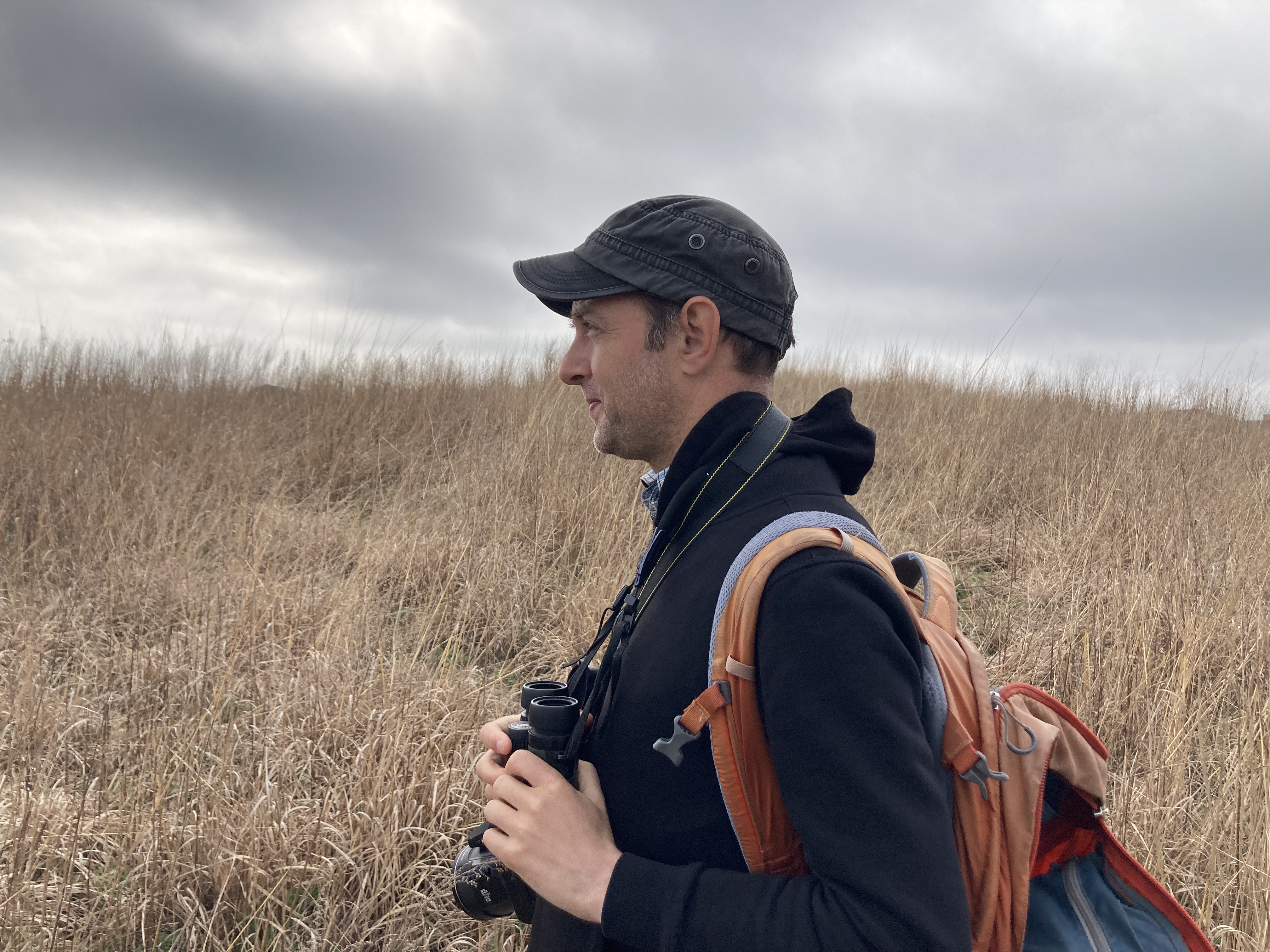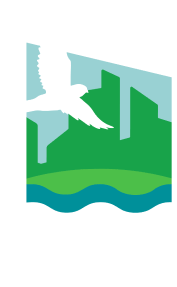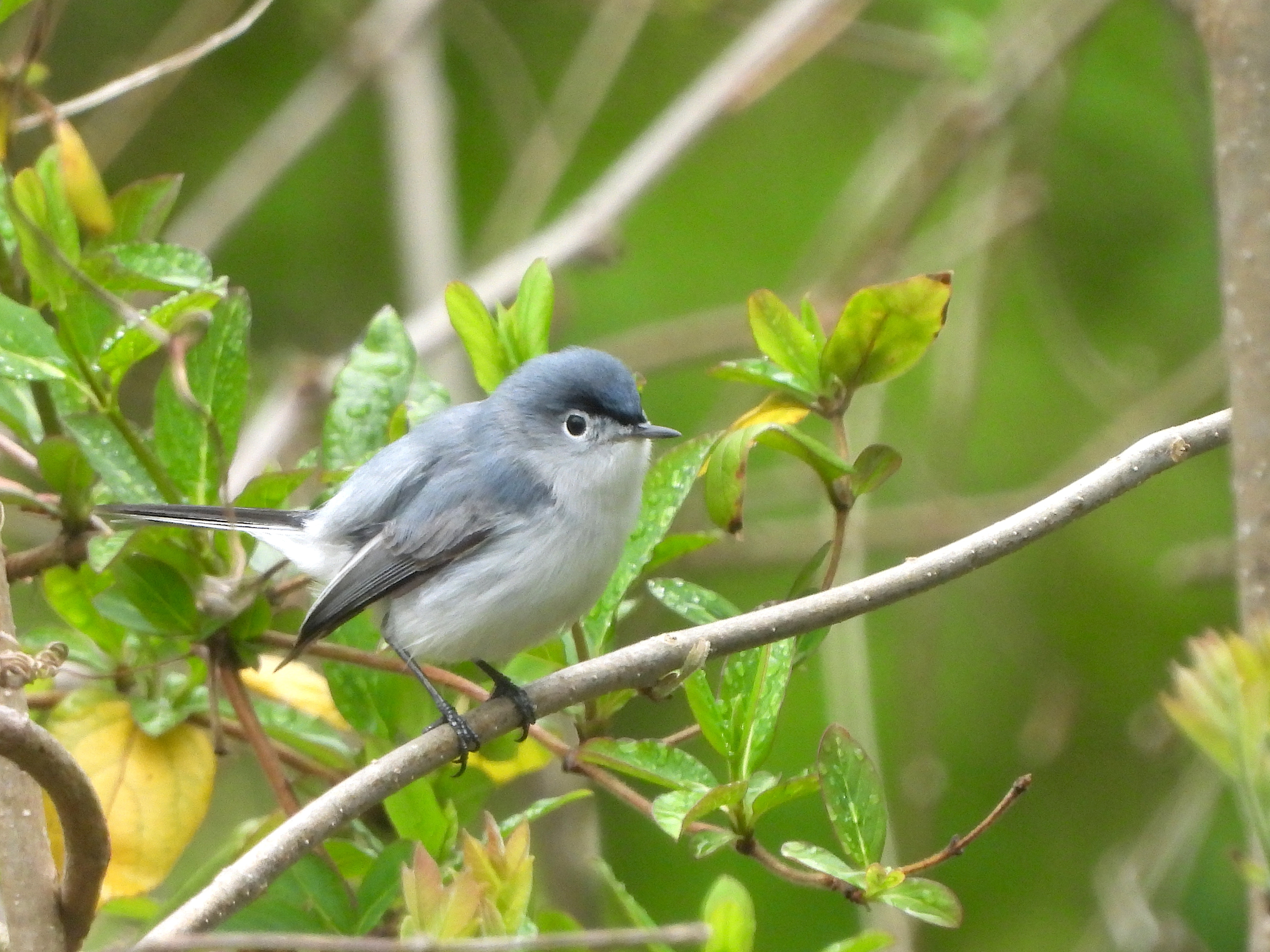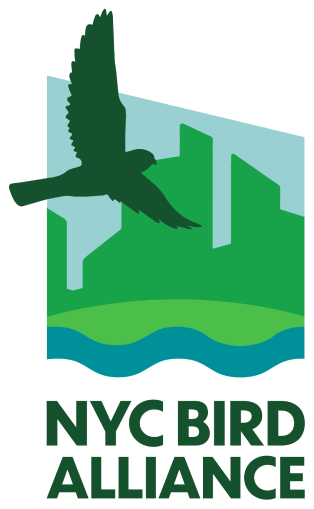Birds are Everywhere: A New York City “Little Year”
category: GENERALENGAGEMENTADVOCACYURBAN BIRD CALL

Birder Nick Dawson birds his patch, Sunset Park in Brooklyn. Photo: Linda Ewing
Birds are Everywhere: A New York City “Little Year”
This article appears in the summer 2024 issue of The Urban Audubon.
Linda Ewing | June 21, 2024
Birds may be everywhere, but birders are not. In New York City, a handful of heavily birded hotspots account for a disproportionate number of observations. Central Park, for example, has more checklists posted on Cornell’s eBird site than all of the Bronx.
This uneven distribution of bird observations underlies what Brooklyn birder Nick Dawson is calling his “little year.” Like more typical big years, Nick’s began as a personal challenge. The prior year of travel and rarity-chasing had left him feeling burned-out.
“I find the focus on chasing birds stressful,” he explains. “It’s reactive, rather than proactive.” Still, he wanted to take on a big year-style project. The solution? Devote 2024 to exploring less-birded spots in the five boroughs.
As a resident of Brooklyn’s Sunset Park neighborhood, Nick already had experience with the challenges and rewards of birding outside the City’s top hotspots. The small park that gives the neighborhood its name is his patch. When he began posting his observations to eBird, Sunset Park had fewer than 60 species listed. Today, it has more than 150–including Western Tanager and Marsh Wren, both found by Nick last fall. But the big increase in species wasn’t due to Nick’s efforts alone. Birding regularly in the park introduced him to other Sunset Park residents who loved birds, leading to impromptu birding meet-ups, and to more neighborhood birders sharing their own findings.
Nick drew two lessons from his Sunset Park patch: not only can areas that aren’t top hotspots be productive and fun to bird, showing up in those areas consistently, binoculars in hand, can help build the birding community.
Those lessons informed Nick’s 2024 project. The first step in his “little year” was to define his targets—not birds, but places. Existing eBird hotspots had to have fewer than 100 checklists submitted and fewer than 100 species listed. For a bit of perspective, Brooklyn’s Prospect Park has more than 45,000 checklists on eBird; Central Park, well over 75,000. To identify additional places, Nick compared regular city maps with eBird’s maps, looking for parks and other green spaces that were not already designated hotspots. Using that method, he’s already proposed 30 new hotspots across the City.
Between new hotspots and less-birded ones, Nick targeted 150 areas. By mid-April, he’d already birded all of them at least once.
For the rest of the year, Nick will be returning to 50 of his favorite sites, letting birds’ schedules determine his own: wooded areas during warbler migration, patches of grassland when sparrows are arriving, coastal areas for shorebirds. His favorites span the City, from Sharrotts Shoreline on the far south of Staten Island, to the Bronx River Forest in the northern Bronx. Both the Bronx and Staten Island are, in Nick’s words, “so good, and massively underbirded.” But he’s also identified, and will be returning to, plenty of under-birded areas in Brooklyn and Queens, and even a few in birder-dense, habitat-scarce Manhattan. He’s eager to demonstrate the potential of areas that the City’s birders have slighted.
Nick doesn’t expect to see as many birds during his place-focused “little year” as he would if he were chasing rarities or spending more time in top hotspots—and he’s okay with that. The birds he does see mean more to him. As spring migration picked up, Nick described his daily birding excursions as offering a sense of potential. “I go out with no other goal than to see what’s there,” he explains. “And I’m never disappointed when I leave. Every new bird is a joyful thing.”
The joy in Nick’s project is not just from the birds he’s seen, but from exploring his City. “Experiencing these places has me understanding more of the City as a whole,” he says. Inevitably, his travels around the city highlight the gap between lush parks with well-funded conservancies—typically in wealthier parts of the city—and under-resourced parks in lower and middle-income neighborhoods. Some consist of little more than asphalt or astroturf and a few London Plane trees. Others are rich in habitat but barely accessible to the community, their isolation making them magnets for illegal dumpers. “I didn’t set out to do good,” Nick confesses, but his experiences have pushed him to advocate for the City’s neglected green spaces. He sees that advocacy continuing after his project ends.
As a birder in little-birded places, Nick recognizes that he’s something of a novelty. The binoculars around his neck make him stand out—neighbors often remember him from past visits—and spark conversations. In his experience, people who don’t consider themselves birders still love talking about birds, from soaring raptors to colorful Northern Cardinals to raucous Blue Jays. Sometimes, they take pity on Nick and offer him advice: does he know that Central Park is a great place to see birds? Why doesn’t he try going there?
Nick turns that advice on its head to suggest that new birders start out close to home. “Wherever you live, there are places close by where you can bird,” he says. He’d love to see a future in which binoculars are as normal in Hamilton Beach Park in Queens and Cypress Hills Cemetery in Brooklyn as they are in Central Park’s Ramble . . . because birds are everywhere, and birders can and should be, too.
Want to find a patch of your own to bird? View our Birding in NYC online guide to learn about over 100 birding hotspots in New York City, from well-known oases like Central Park to under-birded, smaller parks like Kissena Corridor Park in Queens.



